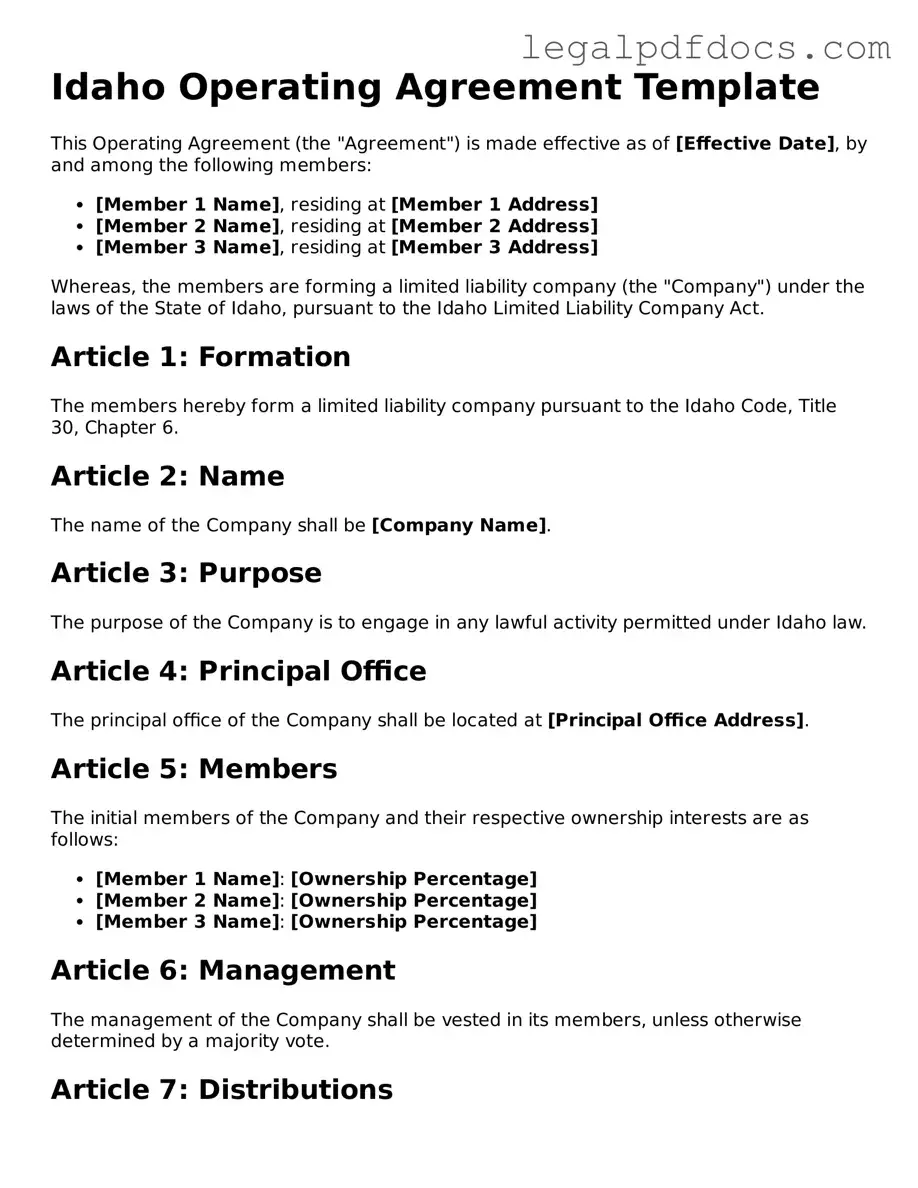Official Operating Agreement Form for Idaho
The Idaho Operating Agreement form is a crucial document that outlines the management structure and operational procedures of a limited liability company (LLC) in Idaho. This agreement serves to clarify the rights and responsibilities of members, ensuring smooth business operations. For those looking to establish or manage an LLC, filling out this form is a vital step—click the button below to get started.
Open Operating Agreement Editor Here
